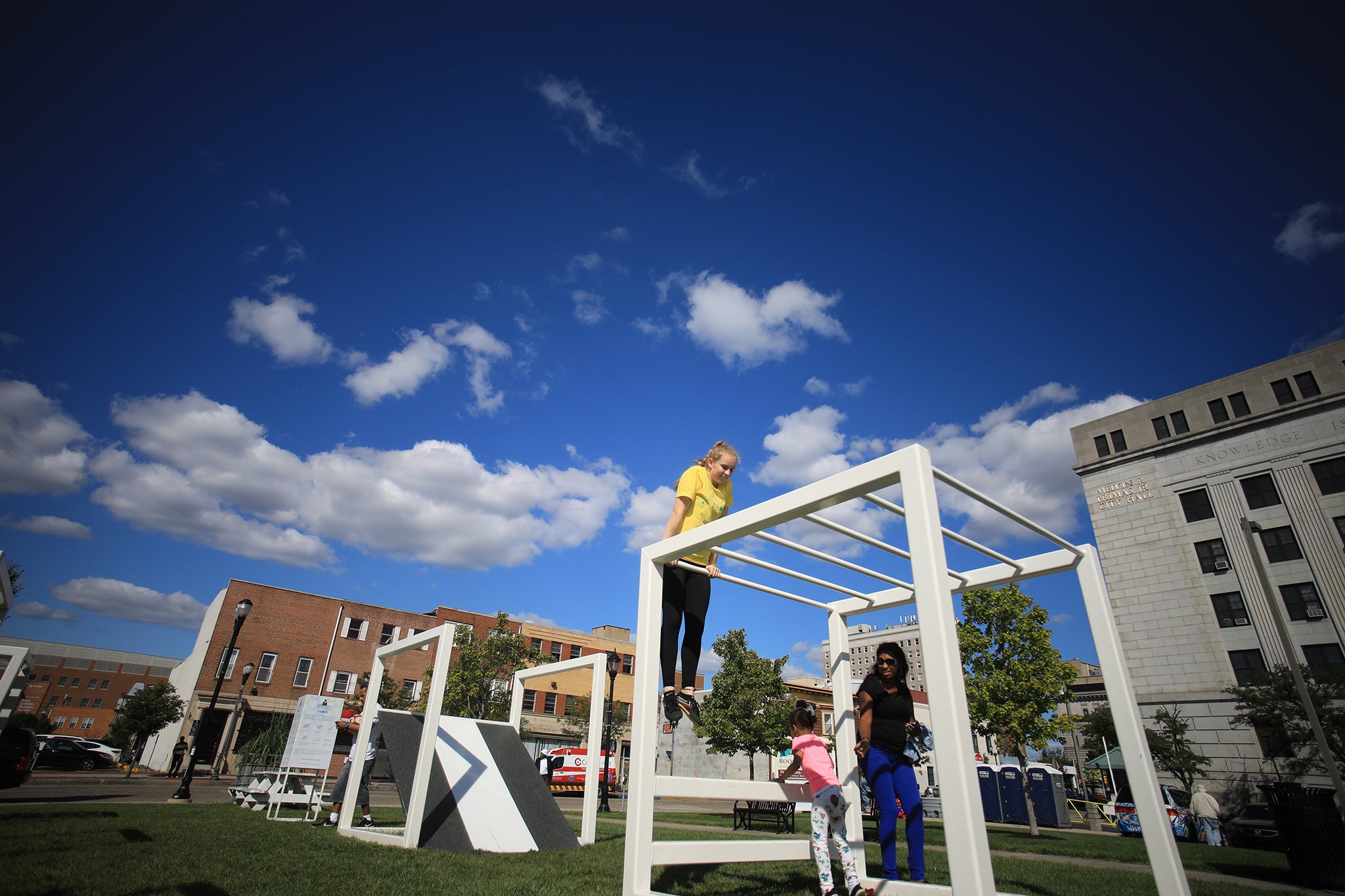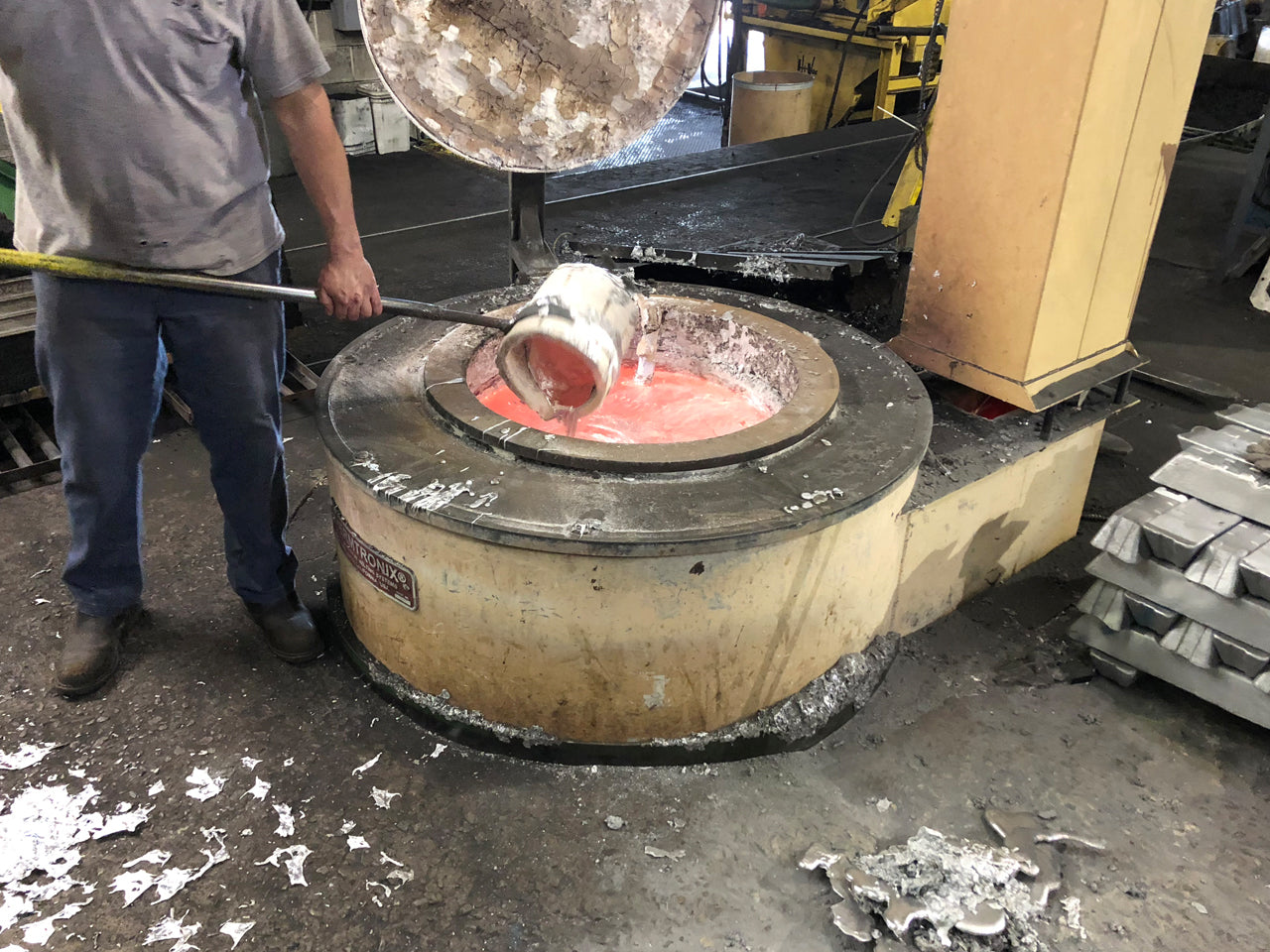Do you like to fidget, pace when you talk on the phone or doodle? You are not alone. Everyone has their own way of releasing excess energy and creativity at work and in life. As designers we are keenly aware of these behaviors and often encourage them. Sometimes creativity depends on it!
The story of my interest in how adults play started a while back when my mom suggested I design ‘a playground for adults’. She had seen our most recent project (our Playscape Cubes for Camden pictured below) and thought this could be a product for kids of all ages. Sometimes it’s hard to listen objectively to your mother, but for some reason this particular conversation struck a chord. I recognized that most people like to play no matter how old they are. There are simply not enough ‘safe’ spaces and tools for doing so. A few lucky people, including acrobats and performers continue “playing” throughout their entire lives. They know that the secret to their creative endeavors is the physical exertion and the training of the mind that play requires.


So what is a designer to do? We began to research the category to see what play products existed for adults (not the kinky kind!). There were a few Ping-Pong tables, some “fun” chairs and lots of sports equipment. When we looked at the leading manufacturers of contract furniture it was just as dismal. The idea of ancillary play products for adults seemed to be too niche for these players. Looking at this landscape you would be led to believe that play is not for adults.
As part of the research, we collected examples of playful spaces, objects and furniture. The surprising finding was that all this “play” had been stealthily introduced into the commercial market through unexpected channels.
It turns out more people are treating their workspaces like living spaces (for designers this sounds familiar). This means we are spending more quality time at work and reconsidering some of the functions of the spaces and tools. We found several instances where these products were labeled as “resimmercial” products and in other cases permeated product lines without any clear differentiation but with the clear intent of softening the tools and behaviors we have gotten used to seeing in workplaces. “Playing” had made its way into commercial products via colors, scale, form and to smaller degree function.



This clarified some of our ideas but was not earth shattering news. We knew that our products were a hybrid and that both individuals and companies were using them in creative ways. The opportunity was in confronting the actual need for play, not in the way playing had been implied and stealthily incorporated into existing tools but in a more direct and active way.




Defining “play” is very hard. It is a very subjective way to describe an activity. A stroll to the park might be play for you and unnecessary exercise for your neighbor. We decided to look back at our childhoods to find simple sources of “universal play” and find overlapping activities tied to productivity (think medicine balls as chairs, standing desks and balancing boards). We were able to isolate a few simple functions that were to some degree universally playful (swings, seesaws, slides, monkey bars, etc.). Everyone seems to remember them, they are found in numerous countries and cultures and the “play function” is clear to most. There is nostalgia attached to these play activities, but once some of the design language is changed the tools that enable this type of play can look and feel right at home outside of the playground context. This was our challenge: How does one design a play object to fit into the contemporary work environment?
We started by refining the play function so that it is carefully considered like contract grade furniture (designed and engineered to last and perform). We redefined materials, forms, colors and scale to make them demographically appropriate while preserving their play function and physicality. This is how we found the essence of the kind of play we were searching for. We edited the noise and the nostalgia and simplified the designs to find new way for adults to relate to themselves and others in work and living environments. Work is Play is just the beginning; today we are giving adults permission to play again, to remove their emotional and physical armor to reconnect.













